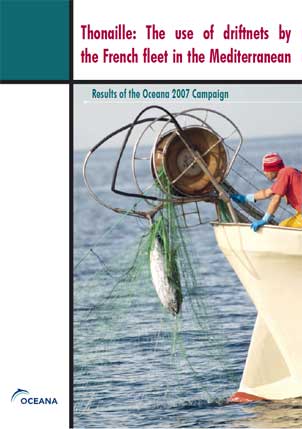Report | April 28, 2010
Thonaille: The use of driftnets by the French fleet in the Mediterranean
In 1989, the United Nations General Assembly (UNGA) agreed a resolution to establish an international moratorium from 1992 on the use of driftnets on the high seas. It was the first worldwide measure adopted against a specific fishing technique. As a result of this decision, several governments established laws to comply with the UNGA mandate. In the European Union (EU), a regulation came into effect, ten years later, which attempted to eliminate the use of driftnets by the EU fleet. Today, driftnets are still being used around the world, constituting a serious threat for the conservation of cetaceans, elasmobranchs, sea turtles and marine birds, as well as calling into question the effectiveness of fisheries management measures. Since it was established, Oceana has been working towards the elimination of this illegal fishing gear from the Mediterranean, annually updating information about these fleets collected during campaigns carried out in the field.
France is one of the EU Mediterranean countries where this fishing technique is still used after the EU prohibition came into effect in 2002. Unlike other countries such as Italy, for example, the French fleet’s illegal fishing practices have received open political support from French authorities. As such, the EU can sanction the France for not responsibly controlling the illegal use of driftnets.
This report aims to present objective and verifiable facts concerning the French fleet’s use of driftnets in the Mediterranean: the legal framework, number of vessels and characteristics of the fishery. The main objective is to provide interested stakeholders with a detailed overview of the state of the more than 92 vessels based in French Mediterranean ports that continue to use this illegal fishing gear, in order to prove that this fleet has no justifiable reason to be exempt from the ban on the use driftnets.


